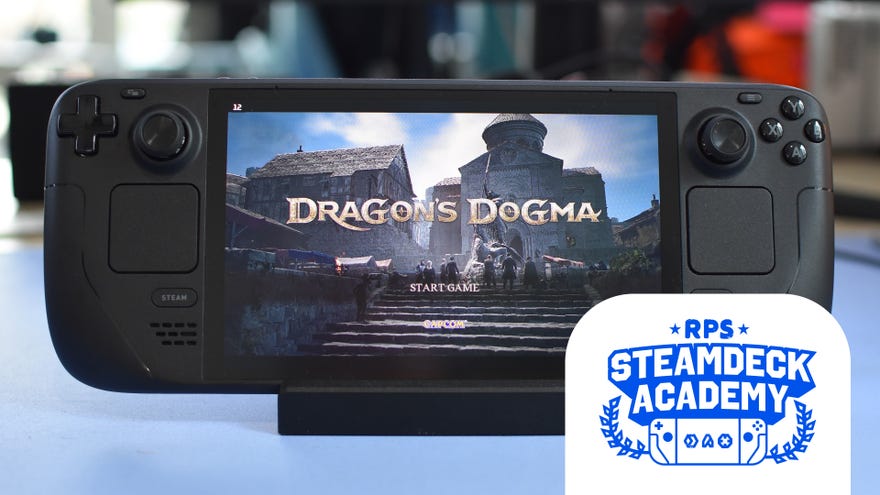Dragon’s Dogma 2 Steam Deck sitrep: it still doesn’t work, sorry
Just making sure
Dragon's Dogma 2 is, as a game per se, very good! It’s creative and intelligent and lets you fill other players’ worlds with recruitable humanoid versions of your pet cats. Still, a technical masterclass it is not. In my performance analysis, I touched on DD2 being particularly unplayable on the Steam Deck, suffering from sub-10fps framerates and a bunch of broken settings. Since that was based on pre-release code, I had quietly hoped that Capcom could pull something – anything – out of the bag to salvage handheld PC play in time for launch day, but now the time has come, I’ve checked again, and nope. This RPG adventure simply doesn’t work on the Steam Deck, and probably never will.
I’d initially installed on a Steam Deck OLED, finding that Dragon’s Dogma 2 couldn’t get past the 10fps mark on the lowest possible settings, sometimes dropping to 7-8fps even away from the most demanding cities. And I stress "possible," because several graphics settings that are freely adjustable on Windows PCs were permanently greyed out on the Deck, making it impossible to change or lower them. Bizarrely, this included locking in Nvidia DLSS, which isn’t even supported on Valve’s handheld – and in the process, locking out AMD FSR, which is. This wasn’t a cloud save consequence either, as I switched to FSR 2 on a separate PC before going back to the Deck, and the latter still forced the non-existent DLSS.
It was also incapable of running at a full 1280x800, the display’s native resolution. Regardless of having Fullscreen, Windowed, or Borderless Windowed mode engaged, it would always max out at 1280x720, either ignoring the request for more vertical pixels or squishing the picture into the shorter aspect ratio.
As of launch day (today, March 22nd), all of these troubles are still present. And worse, when I installed Dragon’s Dogma 2 on my original, 2022 Steam Deck – for a second opinion, of sorts – it was even more unstable. The auto-enabled DLSS/greyed-out settings issue remained, but this time I couldn’t even load a save without the game freezing up, forcing a hard reset.

As reported by IGN, Capcom are looking into future performance improvements for DD2 on PC. The Steam Deck, sadly, looks like a lost cause. Even if the settings and resolutions issues get fixed, average performance would need to triple to become comfortably playable, and I don’t think any game update in history has managed such a feat.
Besides, the Deck’s underlying problem – and this likely extends to similar handhelds, such as the Asus ROG Ally and Lenovo Legion Go – is that its hardware just isn’t enough for a game of DD2’s demands. It’s one that really needs a strong, swift graphics card and especially a good CPU, and the all-in-one APUs that power the Steam Deck and Steam Deck OLED are only the equivalents of years-old, budget-minded desktop parts.
Then there’s the lack of memory. Dragon’s Dogma 2 lists 16GB as a minimum PC spec (and means it), while even its ugliest graphics settings can use over 5GB of VRAM at a time. The Steam Deck, ROG Ally and Legion Go all have shared RAM/VRAM pools of 16GB total, so there’s never enough to go around. Hence, 10fps.
All that being said, I don’t want to sound like I’m gotcha-ing Dragon’s Dogma 2. On powerful desktops, it does exhibit what I’d consider technical problems that need addressing, but the system requirements have been known for ages, so it shouldn’t be a surprise when it struggles on a handheld that fails to meet them. All disappointment aside, consider this an FYI, more than a righteous jabbing of fingers.
The DLSS thing still makes no sense, though.

















